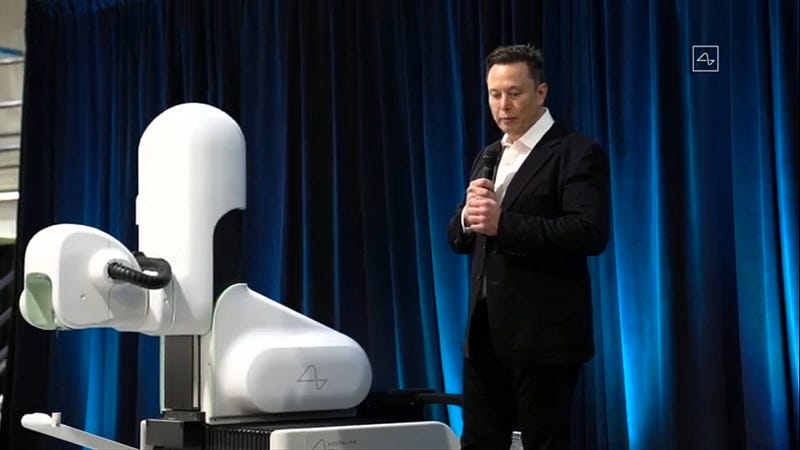Neuralink: A Controversial Leap into Brain-Computer Interface
Written on
The Fascinating Yet Troubling World of Neuralink
Elon Musk's recent Neuralink presentation showcased the innovative technology aimed at connecting human brains to computers, revealing both exciting possibilities and significant ethical dilemmas.

A moment of unease unfolded as Gertrude, an unwilling participant in this experiment, hesitated to leave her enclosure. Musk, embodying a modern-day Tony Stark, chuckled nervously while the team attempted to coax the small brown pig forward. Musk speculated that Gertrude was preoccupied with something fascinating in her corner, but it seemed more likely that she was still processing the invasive nature of her brain implant. This device, almost the size of a quarter, sits beneath her skull, interlinked with delicate threads that penetrate deeper into her brain.
For many of us, the announcement that Musk had successfully and robotically implanted Neuralink devices in living beings stirred a complex mix of emotions—wonder, excitement, and trepidation.

In the four years since Musk introduced the concept of an AI interface for humans, known as Neural Lace, the company has made significant strides. They transitioned from a device partially outside the head to a fully embedded disc that communicates wirelessly via Bluetooth.
A key highlight of the recent event was the introduction of a robotic apparatus designed to implant Neuralink's device—officially termed "The Link"—with minimal discomfort and no need for hospital stays. Musk assured potential users that they could receive an implant and return home within an hour.
Why Neuralink?
According to Musk's presentation, a Neuralink device could address various conditions, including hearing loss, blindness, paralysis, seizures, and anxiety. He emphasized the goal of "solving crucial spinal and brain issues with a seamlessly integrated device." However, this broad term "brain issues" encompasses a vast range of challenges, both positive and negative, that affect our mental processes.
Musk proposed that many issues we face, such as anxiety or memory loss, may be fundamentally electronic in nature, suggesting that an electronic solution is necessary. His engineering mindset is evident in these assertions.

One of the most groundbreaking aspects of Neuralink's technology is its ability to interpret neuron signals and relay information back to the brain. This could potentially revolutionize our interaction with technology.
Exploring Neuralink's Potential
Some features of Neuralink may seem straightforward, akin to a smartwatch equipped with health monitoring capabilities. For instance, it could function as an early warning system for strokes or even play music. Musk humorously likened it to having a smartphone integrated within our minds, though this analogy raised concerns about safety and privacy.
Why the Concern?
Anxiety surfaced during the Q&A session when Musk discussed the future capabilities of Neuralink. He suggested that users might eventually send messages directly to devices, eliminating the need for physical interaction. This idea holds promise for individuals with disabilities, yet it could have broader implications that Musk's team may not have fully addressed.
When questioned about accessing memories, Musk boldly stated that future technology could allow users to save and replay memories, a suggestion that drew immediate comparisons to dystopian narratives like "Black Mirror." While some may find this intriguing, it also raises alarms about privacy and mental autonomy.
In the video "Neuralink: The Billionaire Brain Chip of Nightmares or a Massive Scam? True Horror Story," experts discuss the ethical implications and real-world applications of Musk's ambitious project.
Musk's responses during this session only heightened the unease. He entertained notions of enhanced sensory perception and even telepathy, which led to further speculation about the limits of this technology.
Neuralink's Vision and Risks
Musk's aspirations for Neuralink are not merely about understanding and improving brain function; they also involve mastering the complexities of human cognition in unprecedented ways. The potential to mitigate pain and fear sounds appealing, yet it's crucial to recognize that these sensations serve vital protective roles.
Pain alerts us to danger, and fear prevents us from engaging in reckless behavior. While some level of fear suppression could be beneficial, the cavalier approach to animal experimentation raises ethical concerns.
Furthermore, Musk's motivations are not solely altruistic. With Neuralink receiving FDA Breakthrough Device designation, the drive behind its development seems closely linked to a larger narrative about humanity's relationship with artificial intelligence. Musk believes that enhancing human intelligence is essential to avoid being outpaced by AI.
There is undeniable promise in Neuralink's innovations, particularly for those suffering from chronic pain or mental health issues. However, the rhetoric surrounding its capabilities often overshadows these potential benefits.
Gertrude, the pig, never consented to the implant, and her reluctance to engage with her environment serves as a poignant reminder of the ethical dilemmas inherent in such advancements. I find myself aligning with Gertrude's perspective, choosing caution over unbridled enthusiasm.
In the video "Elon Musk's Neuralink patient demonstrates how brain chip works | Cuomo - YouTube," viewers can witness the practical applications and implications of Neuralink technology.